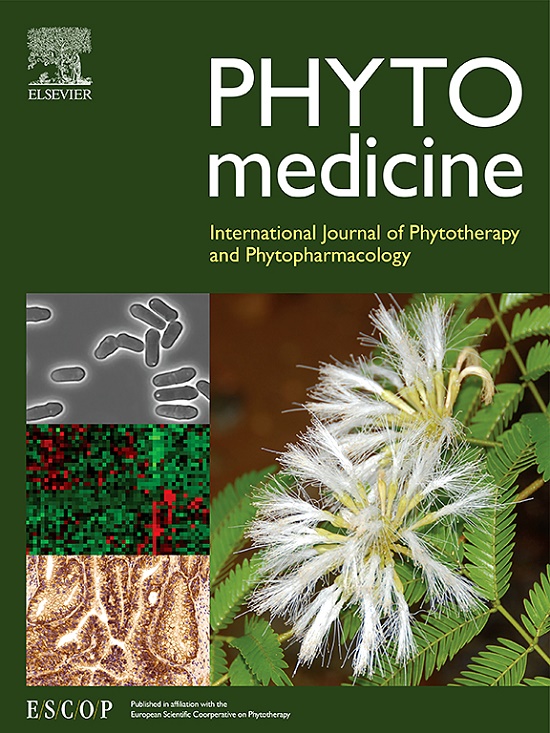Mitochondria-dependent apoptosis was involved in the alleviation of Jujuboside A on diabetic kidney disease-associated renal tubular injury via YY1/PGC-1α signaling
IF 6.7
1区 医学
Q1 CHEMISTRY, MEDICINAL
引用次数: 0
Abstract
Background
Renal tubular injury was a significant pathological change of diabetic kidney disease (DKD), and the amelioration of renal tubular injury through mitochondrial function was an important treatment strategy of DKD. Our previous study had revealed that Jujuboside A (Ju A), the main active substance isolated from Semen Ziziphi Spinosae (SZS), could restore renal function of diabetic mice. However, its protective mechanism against DKD remains unclear.
Purpose
To investigate the effects and the mechanism of Ju A against DKD-associated renal tubular injury.
Study design and Methods
The anti-apoptotic effect of Ju A and its protection effect on mitochondria dysfunction of renal tubular epithelial cells (RTECs) were examined in high glucose (HG)-cultured HK-2 cells, and in db/db mice. Subsequently, Network Pharmacology analysis, molecular docking, luciferase assay, chromatin immunoprecipitation (ChIP), Yin Yang 1 (YY1) overexpression lentiviral vector and peroxisome proliferator-activated receptor-γ coactlvator-1α (PGC-1α) specific agonist ZLN005 were all used to identify the protective mechanism of Ju A towards DKD-associated mitochondrial dysfunction of RTECs.
Results
Ju A inhibited RTECs apoptosis and ameliorated mitochondria dysfunction of RTECs of diabetic mice, and HG-cultured HK-2 cells. YY1 was the potential target of Ju A against DKD-related mitochondrial dysfunction, and the down-regulation of YY1 induced by Ju A increased PGC-1α promoter activity, leading to the restored mitochondrial function of HG-treated HK-2 cells. Renal tubule specific overexpression of YY1 intercepted the renal protective effect of Ju A on diabetic mice via blocking PGC-1α-mediated restoration of mitochondrial function of RTECs. The in-depth mechanism research revealed that the protective effect of Ju A towards DKD-associated renal tubular injury was linked to the restored mitochondrial function through YY1/PGC-1α signaling, resulting in the inhibited apoptosis of RTECs in diabetic condition via inactivating CytC-mediated Caspase9/Caspase3 signaling.
Conclusion
Ju A through the inhibition of mitochondria-dependent apoptosis alleviated DKD-associated renal tubular injury via YY1/PGC-1α signaling.

求助全文
约1分钟内获得全文
求助全文
来源期刊

Phytomedicine
医学-药学
CiteScore
10.30
自引率
5.10%
发文量
670
审稿时长
91 days
期刊介绍:
Phytomedicine is a therapy-oriented journal that publishes innovative studies on the efficacy, safety, quality, and mechanisms of action of specified plant extracts, phytopharmaceuticals, and their isolated constituents. This includes clinical, pharmacological, pharmacokinetic, and toxicological studies of herbal medicinal products, preparations, and purified compounds with defined and consistent quality, ensuring reproducible pharmacological activity. Founded in 1994, Phytomedicine aims to focus and stimulate research in this field and establish internationally accepted scientific standards for pharmacological studies, proof of clinical efficacy, and safety of phytomedicines.
 求助内容:
求助内容: 应助结果提醒方式:
应助结果提醒方式:


